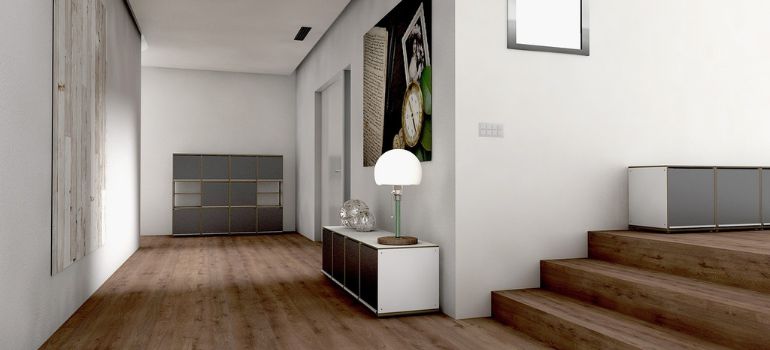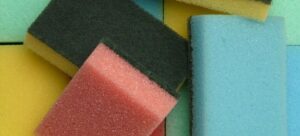When it comes to painting your home, choosing the right type of paint finish is crucial in achieving the desired look and feel for your space. Satin paint offers a smooth and lustrous finish that adds a touch of elegance to your walls. However, if you’re looking for a slightly more subdued, yet equally sophisticated finish, eggshell paint might be the answer. In this article, we’ll explore how to make satin paint into an eggshell finish, giving your walls that subtle and velvety texture you desire.
Understanding the Difference Between Satin and Eggshell Finishes
Before we dive into the transformation process, it’s essential to understand the fundamental differences between satin and eggshell finishes.
Satin Finish
Satin paint is known for its smooth and glossy appearance. It reflects light well and is relatively easy to clean, making it a popular choice for high-traffic areas like kitchens and bathrooms.
Eggshell Finish
Eggshell paint, on the other hand, has a low sheen and offers a soft, velvety texture. It strikes a perfect balance between matte and satin finishes, making it ideal for living rooms, bedrooms, and dining areas.
What You’ll Need
To transform satin paint into an eggshell finish, you’ll need the following supplies:
- Satin paint
- Paint roller
- Paint tray
- Fine-grit sandpaper
- Eggshell finish paint
- Paintbrushes
- Painter’s tape
- Drop cloths
These essential items will help you achieve a beautiful eggshell finish for your walls.
Step-by-Step Guide
Now, let’s go through the process of turning your satin walls into a luxurious eggshell finish.

Step 1: Clean the Surface
Before you begin, it’s crucial to ensure that your walls are clean and free of any dust or dirt. Follow these steps to prepare the surface properly:
- Take a damp cloth or sponge and gently wipe down the entire surface that you intend to paint. This will remove any loose dirt, dust, or cobwebs.
- Pay special attention to areas where dirt or grime may have accumulated, such as near baseboards or in corners. Use a gentle, circular motion to clean these spots thoroughly.
- Allow the surface to air dry completely. This ensures that there is no moisture left on the walls before you proceed with the painting process.
Step 2: Sanding
Lightly sand the satin finish with fine-grit sandpaper. This will create a rough surface for the eggshell paint to adhere to. Be gentle to avoid damaging the wall.
Step 3: Apply Painter’s Tape
Painter’s tape is a crucial tool to ensure clean and precise edges when painting. Follow these steps to apply painter’s tape effectively:
- Begin by unrolling a length of painter’s tape from the roll, keeping it manageable for your application.
- Carefully position the tape along the edges of the areas you want to protect. This can include baseboards, trim, and the ceiling.
- Press the tape down firmly to ensure it adheres securely to the surface. Make sure there are no gaps or air bubbles where paint could seep through.
- Use a straight-edged tool or your fingernail to smooth the tape down and ensure a tight seal.
- Continue applying painter’s tape around the entire perimeter of the area you’re painting, taking your time to achieve precise lines.
- If you’re working in sections, be sure to overlap the tape at the corners to create a continuous barrier.
Step 4: Primer
Apply a coat of primer to the sanded surface. Primer helps the eggshell paint adhere better and ensures an even finish.
Step 5: Apply Eggshell Paint
Once the primer is dry, use a paint roller to apply the eggshell finish paint evenly. Start from the top and work your way down in vertical strokes.
Step 6: Paint in Sections
When transforming satin paint into an eggshell finish, it’s essential to paint in sections to maintain a consistent and even application. Follow these steps to paint in sections effectively:
- Begin by dividing the wall into manageable sections. You can use natural breaks in the wall, such as corners or architectural features, as guides.
- Start at the top of the section and work your way down. This helps to avoid drips or uneven coverage as you paint.
- Dip your paint roller into the eggshell finish paint and coat it evenly.
- Begin applying the paint in vertical strokes from the top of the section, working your way down. Overlap each stroke slightly with the previous one to ensure a smooth, seamless finish.
- Continue this process, covering the entire section before moving on to the next. Avoid leaving any visible seams or lines between sections.
- If you need to take a break, try to do so at a natural stopping point, such as a corner or edge, to prevent abrupt changes in the paint’s appearance.
Step 7: Let it Dry
Allow the first coat to dry thoroughly, following the manufacturer’s instructions. Apply a second coat if necessary for a more opaque finish.
Step 8: Remove Painter’s Tape
After you have finished painting and the paint is still slightly wet, it’s time to remove the painter’s tape to reveal clean and crisp lines. Follow these steps to remove painter’s tape effectively:
- Begin at one end of the taped area. Gently grasp the edge of the painter’s tape with your fingers or use a small, flat tool like a putty knife.
- Slowly and carefully pull the tape away from the painted surface at a 45-degree angle. This angle helps prevent any paint from peeling off with the tape.
- Continue to peel off the tape section by section, ensuring that you pull it away steadily and smoothly.
- Inspect the edges as you remove the tape to make sure the paint lines are clean and sharp. If you notice any areas where the paint has lifted or bled, use a utility knife or a fine brush to touch up those areas before the paint dries completely.
- Dispose of the used painter’s tape properly, and avoid letting it come into contact with other surfaces.
Step 9: Clean Up
After completing your painting project, it’s essential to clean up your tools and the work area properly. Follow these steps for an efficient and thorough cleanup:
- Clean Brushes and Rollers: Use warm, soapy water to clean your paintbrushes and paint rollers. Work the soap into the bristles or nap until they are free of paint. Rinse thoroughly with clean water until the water runs clear. Allow them to air dry completely before storing.
- Dispose of Used Materials: Discard used paint cans, empty paint trays, and any used painter’s tape in accordance with your local waste disposal regulations. Check if there are specific instructions for disposing of paint-related materials in your area.
- Remove Drop Cloths: Carefully fold or roll up any drop cloths or plastic sheeting used to protect the floor and furniture during painting. Shake them outside to remove any loose paint or debris. If reusable, store them for future projects; otherwise, dispose of them properly.
- Clean Paint Spills and Splatters: If you’ve accidentally spilled or splattered paint on unintended surfaces, address it promptly while the paint is still wet. Use a damp cloth or sponge to wipe away fresh paint spills. For dried paint, consult the paint manufacturer’s recommendations or use a suitable paint remover.
- Properly Seal and Store Paint: Seal the paint cans tightly to prevent air from entering and spoiling the paint. Store them in a cool, dry place away from direct sunlight and out of reach of children and pets.
- Dispose of Hazardous Waste: If you have leftover paint or paint-related materials that you no longer need, dispose of them as hazardous waste following your local regulations. Some areas offer recycling or disposal programs for paints and solvents.
- Clean Yourself: If you’ve come into contact with paint during the project, wash your hands and any exposed skin with soap and water. Use an appropriate hand cleaner or solvent if necessary to remove stubborn paint stains.
Conclusion
Transforming satin paint into an eggshell finish can bring a touch of sophistication and warmth to your living spaces. By following the steps outlined above, you can achieve a beautiful and velvety eggshell finish that adds a subtle, elegant touch to your walls. Experiment with different colors and enjoy the transformation of your home’s ambiance.
FAQs
Yes, using primer is essential as it helps the eggshell paint adhere better to the satin surface, ensuring a smooth and even finish.
It’s recommended to sand the satin finish lightly and apply a primer before applying eggshell paint for the best results.
Follow the manufacturer’s instructions, but typically, you should wait for the first coat to dry completely before applying a second coat.
Eggshell finish is ideal for living rooms, bedrooms, and dining areas where you want a subtle, velvety texture with a touch of elegance.
This method is primarily suitable for transforming satin paint into eggshell. It may not work the same way with other paint finishes.
Now that you know how to make satin paint into an eggshell finish, you can embark on your painting project with confidence and create a stunning transformation in your home. For more home improvement tips and ideas, explore our website.



